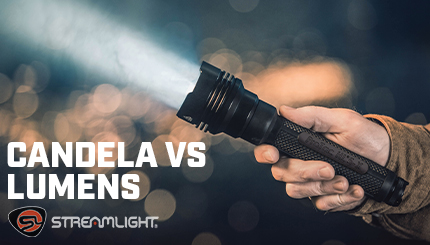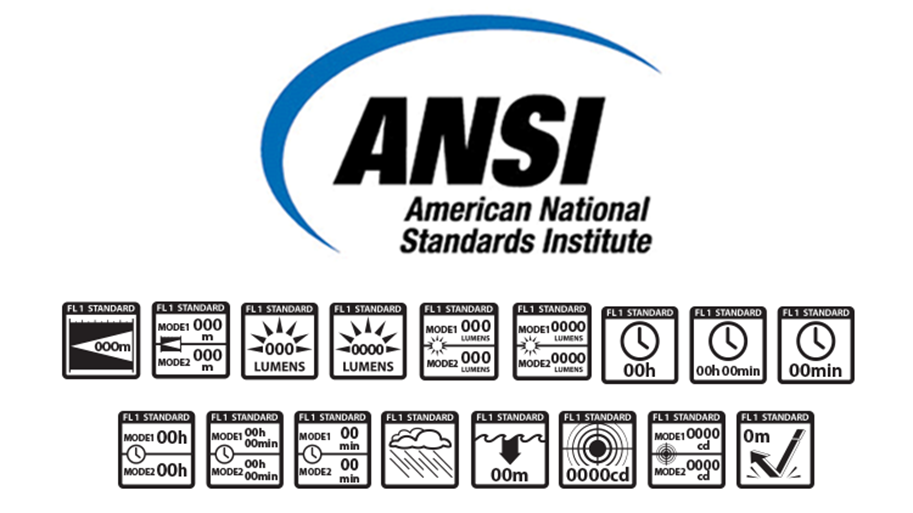Press Releases Detail
Candela vs Lumens
By Brett Marquardt, Sales Manager

There are two primary ways of measuring flashlight output. Candela is one method of measurement and lumens are the second method of measuring flashlight output. Both lumens and candela have specific methods and the testing for each must be conducted as described in the ANSI/PLATO FL1 Flashlight Standard. The ANSI/PLATO FL1 2019 Standard, developed by PLATO (industry experts and stakeholders), details specific testing and reporting methods for portable lighting products that emit directional light.
If the ANSI FL1 icons are present on the packaging, consumers and retailers can be confident that the reported performance claims are tested to industry standards. Even more importantly, the consumer can compare “apples to apples” when evaluating different products.
All flashlights are not measured to each specific icon standard. For example, a small key chain light will probably not need to have a high beam output whereas an area light you would want to be brighter. Some of the engineering required to meet certain specifications could greatly affect the cost of the lights.

This leads us back to how are the two flashlight measurements utilized. Generally speaking, lumens are the total output of the bulb or LED. This definition has changed slightly with the development and acceptance of LEDs. Lumens are measured in a device called an integrating sphere or spectrophotometer, that measures the total output of the light, or “how bright it is”. It does not consider how the reflector shape, size, or the lens may affect the beam pattern of the light. Lumens is the measurement of purely “how bright the light is”. Lumens can be converted into candela, but the conversion is usually not accurate.
Candela is measured at 100 feet from the front of the light to a light sensor down range and is measured by the brightest part or “hot spot” of the beam. This measurement of candela considers the reflector size, shape and how the lens would affect the amount of light sent “down range” at the object you are trying to illuminate. If you have a rating of 10,000 candela hitting your targeted object, this would be twice as much light as 5,000 candela on the object. In many ways this is the most accurate way to compare one light to another for output.
Many people consider lumens to be the “best” criteria for selecting a flashlight, but this is not always true. The amount of light (lumens) and the beam’s down range throw (candela), should be determined by what your application is, as opposed to “bigger is better”. If you were to use your light for up close work (electrical, auto mechanic, phone wiring, campfire starting, tying fishing line, etc.), the brightest output and beam carry “down range” would not be as important to you as beam pattern (wider spread) and low to medium or adjustable light output. A high output would not be desirable for these applications, and you could blind yourself while working. Or the beam pattern would be tight and would not illuminate all of your workspace. The same would not hold true if you are out on a lake looking for a dock or marking buoy. In this case you would want a high output and a larger/longer down range throw.
When we look at tactical uses of flashlights, the selection would probably be a combination of high Lumen output, ample Candela- down range light, and an impressive beam pattern. Most people are searching for a pattern with a good, center beam “hot spot” and good arc or peripheral light around the “hot spot” to utilize when the max output in the center of the pattern is not needed.
In selecting your next flashlight, do not just start with the “brighter is better” philosophy with candela or lumens, but start with what your application is going to be and select the best light using all the lighting criteria.

